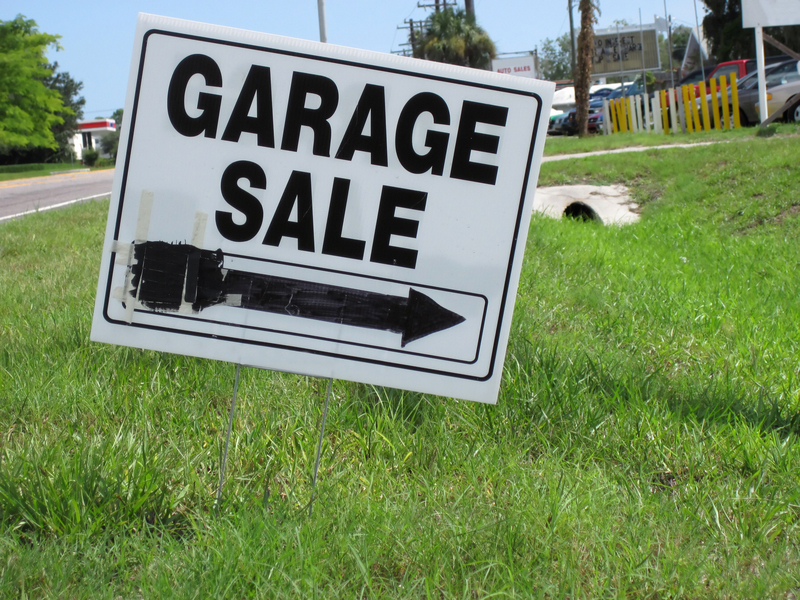Step-by-Step Clutter Removal and Hoarder Clean Up for Lasting Results
Clutter can easily take over our living spaces, impacting not only the aesthetics of our homes but also our mental and physical well-being. For individuals struggling with hoarding tendencies, the challenge of regaining a clean, organized home can seem almost insurmountable. Fortunately, with a comprehensive, step-by-step clutter removal and hoarder clean up plan, it's possible to achieve lasting results and truly transform your environment. In this guide, we'll explore practical strategies, professional tips, and key insights for efficient hoarder clean up and ongoing clutter management.

Why Is Clutter Removal and Hoarder Clean Up Important?
Living in a cluttered or hoarded space can cause a range of issues, from increased accident risks to feelings of shame and isolation. Clutter removal and hoarder clean up offer several benefits:
- Improved Health: Reducing dust, mold, and pests for better air quality and fewer allergies.
- Mental Well-being: Alleviating anxiety, stress, and depression caused by overwhelming clutter.
- Enhanced Safety: Clearing walkways minimizes tripping hazards and fire risks.
- Functional Space: Restores living areas for everyday use and improves quality of life.
Understanding the Hoarder Clean Up Process
The process of hoarder cleanup differs from general decluttering due to the quantity of items, the emotional attachments involved, and the potential biohazards present. Successful hoarder clean up requires sensitivity, planning, and, often, a support system. Here's an in-depth look at how to begin, maintain momentum, and ensure long-term decluttering success.
1. Prepare: Assess the Cluttered Space and Make a Plan
Every clutter removal journey begins with preparation. Before diving in, take the time to assess the living space:
- Identify key problem areas (kitchen, living room, garage, bedrooms, etc.)
- Evaluate the severity of clutter and potential hazards (including mold, broken items, or pests)
- Decide if professional hoarder clean up services or counselors should be involved
- Set realistic goals and expectations - it took time to accumulate the mess, and it will take time to clear it
Tip: Take photos for before-and-after motivation and documentation.
2. Gather Supplies for Effective Decluttering
Having the right tools is essential for efficient clutter clearing. Consider gathering:
- Heavy-duty trash bags and bins
- Gloves, masks, and protective clothing
- Cleaning solutions and disinfectants
- Sorting boxes or containers (Keep, Donate, Discard, Recycle, Unsure)
- Labels, markers, and sticky notes
Professional hoarder clean up teams often use specialized equipment for biohazard removal, so don't hesitate to hire help if needed.
3. Prioritize Safety in Hoarder Clean Up
Cluttered and hoarded spaces can pose serious risks. Always prioritize safety as you tackle the cleanup:
- Ventilate rooms to reduce dust and odors
- Wear masks and gloves to protect from allergens and potential pathogens
- Be cautious of broken glass, sharp objects, or hidden trip hazards
- Check for mold or pest infestations and contact professionals if necessary
Step-By-Step Clutter Removal Process for Lasting Results
Now that you are prepared, it's time to roll up your sleeves and begin turning chaos into order. The following step-by-step approach is proven to be effective for both routine clutter and severe hoarding situations.
Step 1: Start Small for Big Impact
Taking on an entire home at once can be overwhelming. Instead:
- Focus on one small section at a time - a countertop, a single shelf, or one drawer
- Commit to short, focused sessions (15-30 minutes to start)
- Celebrate small wins to maintain motivation
Step 2: Sorting and Decision-Making During Clean Up
The heart of clutter removal is sorting. Use the four-box method:
- Keep: Items used regularly and bring value
- Donate: Usable items in good condition with no sentimental ties
- Discard: Broken, expired, or unusable items
- Unsure: Items you find difficult to decide on
Tip: If you haven't used or needed something in a year, it's often safe to let go.
Step 3: Clean the Cleared Space
With each sorted area, thoroughly clean surfaces:
- Dust shelves, wipe down walls, and vacuum carpeting
- Sanitize areas exposed to trash or animal waste
- Repair minor damages as you go
Step 4: Organize and Return Items Strategically
Before returning items to their place:
- Group similar items together for easy access
- Utilize storage solutions such as bins, shelves, or drawer dividers
- Label boxes and bins for quick identification
Step 5: Remove Disposal and Donations Promptly
Don't let sorted-out clutter linger:
- Schedule donation pickups or drop-offs immediately
- Arrange for bulk trash disposal if necessary
- Recycle whenever possible
Step 6: Address Emotional and Mental Barriers
The psychological aspect of hoarder clean up is just as important as the physical:
- Recognize the emotional connections to clutter
- Enlist patient, nonjudgmental support from loved ones or professionals
- Consider counseling or therapy for chronic hoarding disorder
- Practice self-compassion and forgiveness throughout the process
Maintaining Results After Hoarder Clean Up
A truly effective hoarder clean up transforms not just the space, but also your habits and routines. Follow these tips for long-term clutter control:
Establish Daily and Weekly Routines
- Dedicate 10-15 minutes daily to tidying up
- Set aside "declutter days" each week for deeper cleaning
- Stay vigilant for clutter "hot spots" and address them immediately
Implement the "One-In, One-Out" Rule
- Every new item entering the home means one goes out
- Prevents accumulating new clutter and maintains balance
Re-evaluate Belongings Regularly
- Seasonal or yearly purges keep unwanted items at bay
- Regularly donate, sell, or recycle unused things
Create Support Networks and Accountability
- Involve family or friends in ongoing maintenance
- Join support groups, either in-person or online, to share challenges and progress
Seek Professional Help If Needed
-
Professional hoarding clean up companies handle severe or hazardous situations
They provide peace of mind and expertise in even the most challenging environments
What If the Clutter Returns? How to Prevent Relapse
Clutter can creep back if unchecked. Recognize early warning signs:
- Surfaces start piling up with unprocessed mail or items
- Rooms become difficult to navigate
- Emotional distress increases as clutter grows

Frequently Asked Questions About Clutter Removal and Hoarder Clean Up
How long does hoarder clean up take?
It depends on the severity and size of the space. Light clutter removal can be completed in a weekend, while severe hoarder clean ups may take days or weeks, especially if hazardous materials are involved.
Is hoarder clean up covered by insurance?
Generally, insurance does not cover standard clutter clean up, but it may cover specific circumstances like biohazard remediation after an accident. Check your policy and consult with providers for details.
Can I clean up a hoarder's house by myself?
If safety permits, you can begin on your own or with help from trusted friends. For severe hoarding, dangerous conditions, or when biohazards are present, it's best to consult professional hoarder clean up services.
What if the person refuses help?
Patience and empathy are crucial. Avoid ultimatums, instead encourage open dialogue and offer ongoing support. Sometimes, mental health professionals specializing in hoarding disorder can help facilitate the process.
Conclusion: Achieve Lasting Results with Step-By-Step Clutter Removal
Clutter doesn't have to define your living space or your life. By following a step-by-step clutter removal and hoarder clean up guide, you can reclaim comfort, safety, and peace of mind. Remember:
- Prepare thoughtfully and prioritize safety
- Work systematically, one area at a time
- Address emotional roots of clutter and seek support
- Maintain your progress with mindful routines and ongoing purging
If you're ready to experience the freedom of an organized home, begin your clutter removal and hoarder clean up today. Your future self - and your loved ones - will thank you for taking the brave first step.